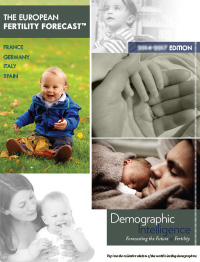European Fertility Forecast

The European Fertility Forecast™ provides detailed annual forecasts of births and fertility for every European Union member state, as well as non-member European countries like the United Kingdom, Norway, Iceland, Switzerland, Belarus, Ukraine, Georgia, Armenia, Azerbaijan, and the Balkan states. For Italy, Spain, Germany, the United Kingdom, and France, the report also provides comprehensive historic data and forecasts of births by age, marital status, and live birth order. As with all of our products, we pair the published data package with ongoing support, coming alongside companies’ analytic teams to assist with data interpretation and usage, and answering any new questions that emerge in response to news events or new trends.
While we cannot guarantee 99% accuracy for the European Fertility Forecast™, know that we are monitoring the underlying conditions which impact women of childbearing age on an ongoing basis and modifying our projections biannually In the latest year for which accuracy can be compared, the European Fertility Forecast’s error rate was 34% smaller than the error rate for the U.N. World Population Prospect report published at the same time, and 38% smaller for the five major countries with detailed data. We are dedicated to providing the most accurate forecasts of European births possible. Our forecasting model is built around the ongoing analysis of key economic, demographic, political, and cultural drivers of European fertility. Because we interact with our clients on a regular basis, we are constantly working to improve our model and make our forecasts more valuable for their specific needs.
The European Fertility Forecast™ is available as an biannual or annual subscription. Please contact us today to see where fertility trends in Europe are headed.
99+% Accurate Predictions
While no forecast can achieve perfect accuracy, our forecasts have been more than 99% accurate in 7 of the last 9 years, and more than 97% accurate in all of them. We constantly monitor the latest data relevant to fertility trends, and have greatly increased our model’s accuracy since 2016 to account for the changing behaviors of the Millennial cohort.

